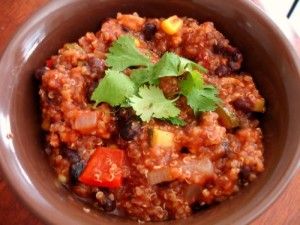Article
Meal Modifications for Food Allergies
While food allergies can spark fearful thoughts and concerns, they can be quite manageable with awareness and modifications.
Food allergies are becoming more prevalent in our society. Although I will not attempt to hypothesize all of the causes for this growth, it should be noted that allergies have a huge impact on the food industry and health care system.
As a pharmacist and cook, I tend to be very conscious of the ingredients I use in the kitchen. Yet, my household is allergy-free, so I take for granted all the options I have when it comes to meal planning and snacking.
My friend Emily cannot be as carefree and experimental in the kitchen. Her young son has a number of food allergies that have essentially transformed her kitchen and her household's eating habits and options. I asked Emily what it is like to manage a household where a member has life-threatening and life-altering food allergies. While she expressed that food allergies can spark fearful thoughts and concerns, she said they can be quite manageable with awareness and modifications.
Emily has gone above and beyond to educate not only her son about his allergies as he gets older, but also his family and surrounding community. She has mastered the art of reading food labels and learned how to decipher the many names given to one product to detect the allergen culprit. For example, did you know that corn and its byproducts have nearly 200 different names that can be used in labeling?!
Suspected food allergies should always be diagnosed by a health care professional so that he or she can help provide the right tools for care and successful self-management. After you are diagnosed with a food allergy, trust becomes a huge component when eating and socializing.
While having professionals prepare your food at a restaurant can be an easier, less-stressful alternative, it is not sustainable. Sunday family suppers, school snacks and lunches, and neighborhood and birthday parties are all situations where consideration needs to be made when feeding those with food allergies. Ask questions, modify traditional recipes, and don’t let frustration boil over. Try to turn dealing with food allergies into creative opportunities to test your skills in the kitchen.
Emily shared one of her son’s favorite allergy-friendly recipes. As the cold weather starts to creep into the Midwest, nothing sounds better than a warm bowl of chili. Give this recipe a try and, if you happen to be allergic to an ingredient, modify it into your new favorite.

Ingredients
1 cup uncooked quinoa, prepared according to directions and set aside
2 tablespoons olive oil'
1 onion, chopped
4 cloves of garlic'
1 tablespoon chili powder'
1 tablespoon ground cumin'
1 28-ounce can of crushed tomatoes'
2 19-ounce cans of black beans, drained & rinsed'
1 green bell pepper, chopped'
1 red bell pepper, chopped'
1 zucchini, chopped'
1 medium sweet potato, diced into 1-inch pieces'
1 jalapeno pepper, seeded and chopped'
1 tablespoon minced chipotle peppers in adobo sauce, though I omit these for kids, because even a small amount provides a lot of heat
1 teaspoon dried oregano
Salt and pepper to taste'
¼ cup fresh cilantro, chopped'
*This recipe is great as a vegetarian dish, but, sometimes, I like to add shredded chicken or ground beef at the same time I add the vegetables.
Preparation
1. Cook the quinoa according to the package directions, which takes about 20 minutes, and then set aside. I like to use chicken or vegetable stock instead of water to add flavor.
2. Heat the oil in a large pot over medium heat. Stir in the onion for about 3 minutes until it turns translucent. Add the garlic, chili powder, cumin, and oregano and stir for 1 minute until the flavors release.
3. Stir in the red and green bell peppers, zucchini, jalapeno, and sweet potato—and, if desired, chicken or other meat—to coat with the spices, and then stir in the crushed tomatoes, black beans, and chipotle peppers in adobo.'
4. Bring to a simmer over medium heat, and then reduce to low heat, cover, and simmer for about 30 minutes until the sweet potatoes are tender, adding a bit of water, chicken stock, or vegetable stock as the liquid cooks down. Stir often to prevent the bottom from burning, and then season to taste.
5. Once the sweet potatoes are tender, stir in the quinoa, top with cilantro, and serve.
Newsletter
Stay informed on drug updates, treatment guidelines, and pharmacy practice trends—subscribe to Pharmacy Times for weekly clinical insights.

FDA Grants Full Approval to mRNA-1273 COVID-19 Vaccine in Children At Increased Risk




